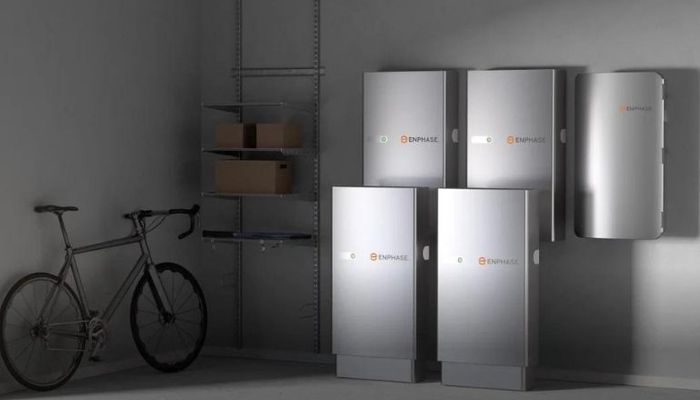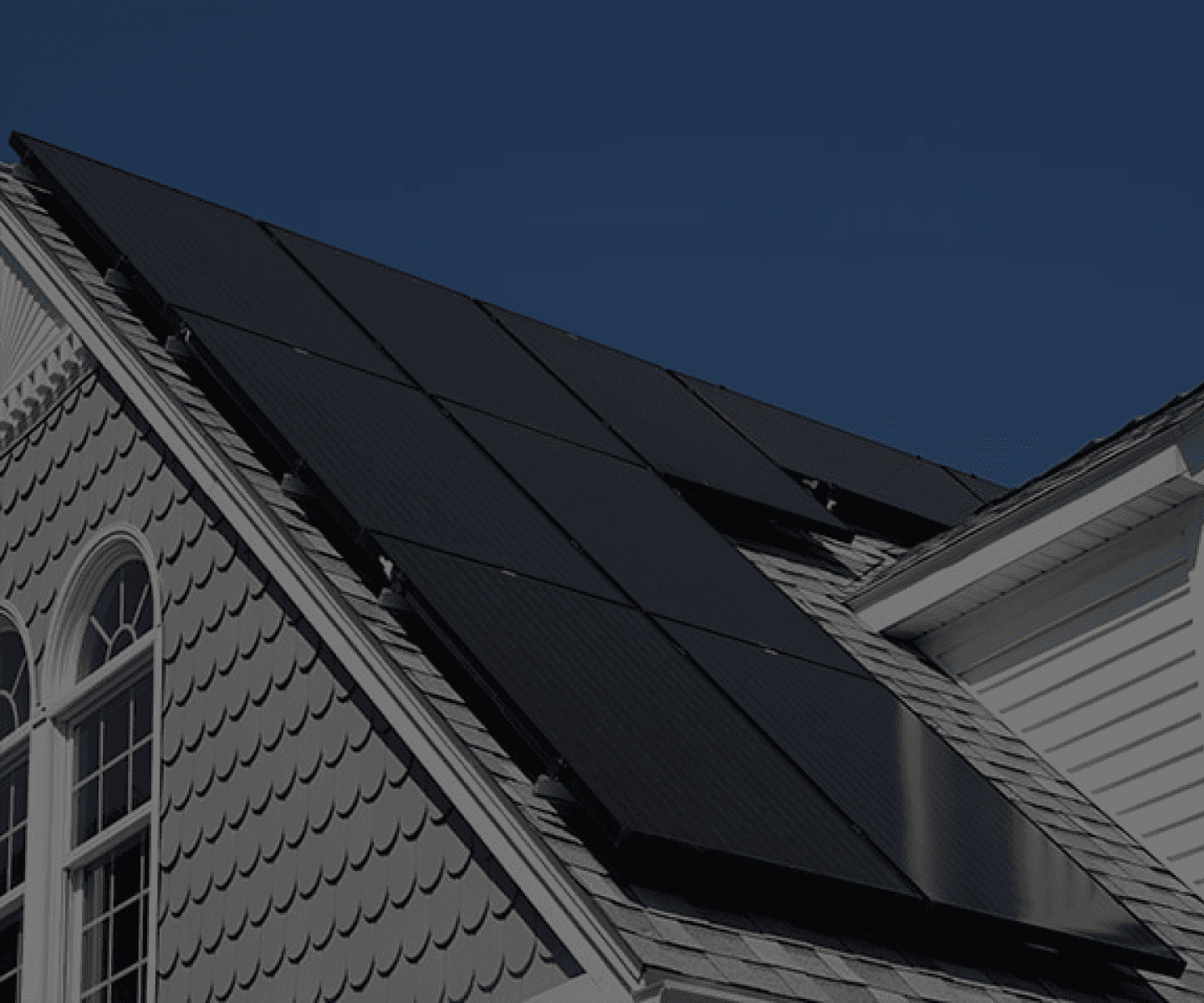The Different Types of Solar Batteries Explained

It used to be that battery banks were only installed with off-grid solar power systems, but this is no longer the case. Because of changing net metering rules like California’s new NEM 3.0, peak time power rates soaring and increasing grid instability all over the country, more people are including battery systems when installing their grid-tied solar panels.
Many customers are also adding battery banks to their existing solar after they experience the frustration of going through a power outage knowing their solar panels could provide backup power if they added battery storage capacity.
So now that the benefits of solar battery storage are clear, the question is, what type of battery should you get?
This article will walk you through all the different types of solar batteries to store energy from your panels so you can use it when you need it.
Different Types of Solar Batteries
There are several different types of solar battery storage but the one thing they have in common is they are all deep-cycle batteries. This means that they are rated for long, slow discharges like you would see in a home running on backup power, unlike a starting battery that provides a burst of power.
Flooded Lead-Acid Batteries
Flooded lead-acid batteries, also known as wet cell batteries, are a type of rechargeable battery that is commonly used in solar energy systems. These batteries are made up of lead plates submerged in a liquid electrolyte solution of sulfuric acid and water. While they are less expensive than sealed batteries, they require maintenance and ventilation.
You must add distilled water to flooded batteries on a regular basis. They can run dry without the added water, potentially preventing them from ever holding a charge again. If you can’t commit to regular maintenance, buying flooded batteries can be a costly mistake. Even if you get a self-watering kit, you still must ensure that there’s sufficient water in the reservoir at all times.
It’s also important to consider their ventilation requirement. You must install flooded batteries upright in a well-ventilated space to prevent the buildup of hydrogen gas during charging, which is poisonous and flammable.
Overall, flooded lead-acid batteries are a reliable option for smaller solar systems but we wouldn’t recommend them for ones that require higher power output.
Pros of Flooded Lead-Acid Batteries:
- Inexpensive
- Reliable
- Widely available
- Easy to dispose and recycle
Cons of Flooded Lead-Acid Batteries
- Require ventilation and maintenance
- Must be installed upright
- Shorter lifespan
- Not as energy-dense as some other types of batteries, which means they take up more space and weigh more
- Only about half the storage capacity can be used without damaging the battery
Sealed Lead-Acid Batteries
Sealed lead-acid batteries are a little pricier but do not have flooded batteries' maintenance and ventilation requirements. Although similar to flooded in their basic construction, as the name suggests, they are completely sealed so there’s no need to add water or check the electrolyte level. That means you can also install them on their sides without worries about hazardous chemical leakage.
The most available sealed lead acid batteries are gel and absorbent glass mat (AGM). Sealed lead-acid batteries are also often called valve-regulated lead-acid batteries (VRLA).
Pros of Sealed Lead-Acid Batteries
- Maintenance-free
- Can be installed upright or sideways
- Does not emit gasses
- Ideal for remote locations and difficult-to-access installations
Cons of Sealed Lead-Acid Batteries
- More expensive than flooded lead-acid batteries
- Sensitive to overcharging, which can reduce lifespan
- Only about half the storage capacity can be used without damaging the battery
- Cannot be serviced or reconditioned
Lithium Batteries
Lithium-ion batteries are a type of rechargeable battery that uses lithium ions to store and release electrical energy. They have become increasingly popular for use in solar energy systems due to their high energy density, long lifespan, and low maintenance requirements They are well-suited for applications where space and weight are at a premium, and where a fast recharge time is desirable.
When comparing lithium to lead-acid, lithium batteries will usually be more expensive but are designed to last longer. In terms of storage capacity, you can only discharge lead-acid batteries to 50% of their capacity for maximum longevity. In contrast, you can discharge lithium batteries to 10% of their capacity. This means lithium batteries will provide more usable energy than lead-acid batteries.
Moreover, most Lithium batteries come in 48-volt or 300-volt configurations, which is quite different than the voltages seen with typical lead-acid batteries. They include a built-in circuit to protect the battery and regulate charge, called the battery management system (BMS).
When choosing a lithium battery system, it is essential to make sure you are getting an inverter that is compatible with the battery. Some inverters, like the Sol-Ark, are designed to run with a 48-volt battery bank. While other inverter systems, like Enphase, can work with a 300-volt battery. Lithium batteries and inverters will usually be connected to communicate with each other, and you need to make sure to use only compatible and approved models.
Pros of Lithium Batteries
- Maintenance-free
- Can be installed upright or on their side
- Higher storage capacity than lead acid batteries
- Does not emit gasses
- Long lifespan (up to 10 years)
- Fast charging
Cons of Lithium Batteries
- More expensive than lead acid batteries
- Some lithium batteries are prone to overheating and catching fire

Salt Water Batteries
Salt water batteries, also known as seawater batteries or aqueous batteries, are a newer type of battery technology that uses a saline solution as the electrolyte instead of toxic chemicals. They are considered an environmentally-friendly alternative to traditional battery technologies.
Salt water batteries have a lower energy density than some other types of batteries, such as lithium-ion batteries, which means they can store less energy per unit weight or volume.
They are very safe for you and the environment and have a long lifespan of over 20 years. However, due to being a relatively newer technology, the manufacturing costs are higher which in turn makes them more expensive. And lastly, saltwater batteries are bulkier so they are not practical for most solar applications.
Pros of Salt Water Batteries
- Maintenance-free
- Long lifespan
- Easy to recycle
Cons of Salt Water Batteries
- Low storage capacity
- Very large
- More expensive
- Not readily available
Other Types of Solar Batteries
These newer and lesser-known battery types are still being developed and refined, and their cost and reliability are still being evaluated. However, they hold great promise for the future of solar energy storage and may offer significant improvements over traditional battery technologies.
- Solid-state batteries use a solid electrolyte instead of a liquid or gel electrolyte, which offers several advantages, including higher energy density, faster charging times, and improved safety. Solid-state batteries are still in the early stages of development, but they have the potential to revolutionize battery technology in the coming years.
- Zinc-air batteries use zinc as the anode and oxygen from the air as the cathode, which means they do not require a separate cathode material. Zinc-air batteries have a high energy density and can potentially be cheaper and more environmentally-friendly than other types of batteries. However, they have some limitations, such as a relatively short lifespan and the need to periodically replace the zinc anode.
- Liquid-metal batteries use two liquid metals as the electrodes and a molten salt electrolyte. They have the potential for high energy density, long cycle life, and high power output, which makes them well-suited for use in grid-scale energy storage applications. However, they are still in the early stages of development and face some technical challenges, such as the need to maintain a stable interface between the liquid metals and the electrolyte.
Read more: 5 Best Solar Battery Backup Systems for Homes in 2023
Choose GoGreenSolar for Your Solar Battery Needs
In the end, the best way to choose the best battery technology for your solar power system is to talk to the experts. Get in touch with GoGreenSolar and our seasoned professionals will help you through the whole process of purchasing and installing solar panels with energy storage.






